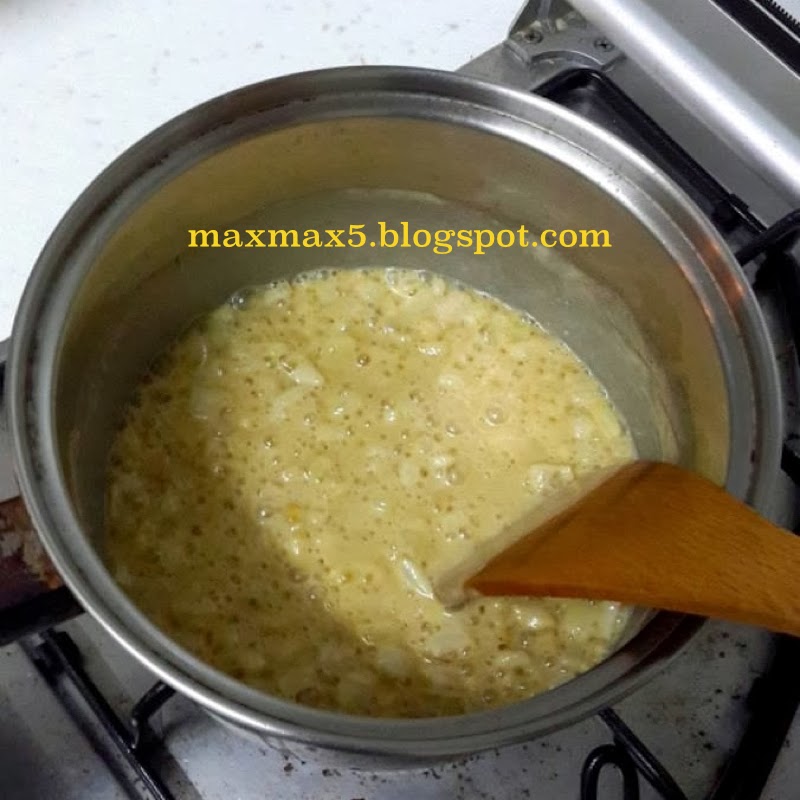Have you ever wondered why there are few particular tastes are the same over few eateries, example the never-changed Soup of the Day: Cream of Mushroom? On the other hand, what about some eateries that highlighting their food(s) is freshly cooked daily, but has different taste that the one you are so familiar with? Well in this post, let us compare, on few criteria with pictures, some of the differences between instant flavouring with the freshly made opposite.
Preparation Time
As it's name suggests, instant flavouring means in just a few steps, a chef can serve a bowl of "soup of the day" - cream of mushroom. That the steps may be, but not limited to, pour in the instant mixture, add water, bring to boil, garnish (might be skipped) and serve. While for the freshly cooked, the few main steps are cook a stock, get the mushroom diced together with some other aromatic vegs like onion, garlic, sautée the vegs and then add in the stock, shimmer and blend until desired consistency. Adjust texture with cream and flavour with seasoning. Garnish and serve.
It is clear that with instant mix, a hot soup is possible to be served within 10 minutes while the other could take hours from plain water to the soup on your bowl.
Flavour
As mentioned in the opening, maybe you will find the taste of the soup is the same with other eateries. Thanks to industrialisation under the capitalism culture most of us are living in, food manufacturer tends to cast a very wide sale network all over. Result? Eateries are getting the same ingredient to cook the soup, in this example and eventually many will developed a 'taste-memory' that the mushroom soup should taste like this.
For the freshly made, simply because a simple humble mushroom soup may consist of easily more than 7 ingredients, just to name a few: button mushroom, onion, chicken stock, salt, pepper, water, flour, different chefs can have different recipe base on just these 7 ingredients by varying the quantity of each of them. So imagine how many combinations it can be and so how many taste it will develop in the end.
Cost
This is rather straight forward: when you use less man hour to prepare for example the brown sauce, which is a multi-purpose sauce for a lot of different kind of dishes, you are actually increasing your productivity in the kitchen and that means you are lowering the cost.
This can also be measured by potential quality issue(s) such as the quality of freshly made brown sauce might not be consistent due to the different quantity and quality of the raw ingredients a chef added in. This case is likely to happen when an eateries have been running on a lengthy period of time. Result could be lost of customer.
Sincerity
Eating is actually a link between the one who eats and the one who cooks. This is a bit imaginative. To some people, what is the matter? I includ this in because as a cook myself, I count this is a very important factor whether or not when judging if the food served is right or in a descriptive word, heart-filled. Why ?
We eat everyday from everywhere, overtime, we developed an emotion toward the food we ate unconsciously. You might not notice it but when the question is right, you will answer without a second thought. Example: which one is the food you missed the most, why? Choose between your mom's cook (from raw ingredients) vs. fast food (using industry prepared ingredients).
Conclusion:
I'm not here to give you an absolute answer which one is better over the other but to share with you sort of an idea how foods are prepared in different ways and how can we as a consumer made a choice that is suitable to our very personal need. A flavour that is standard all over, or a unique taste that challenges the skills of a chef. A fast meal or a slow cooking dish. So next time when you eat, you can at least know a bit by now, what actually are you eating. I hope you enjoy reading this.





No comments:
Post a Comment